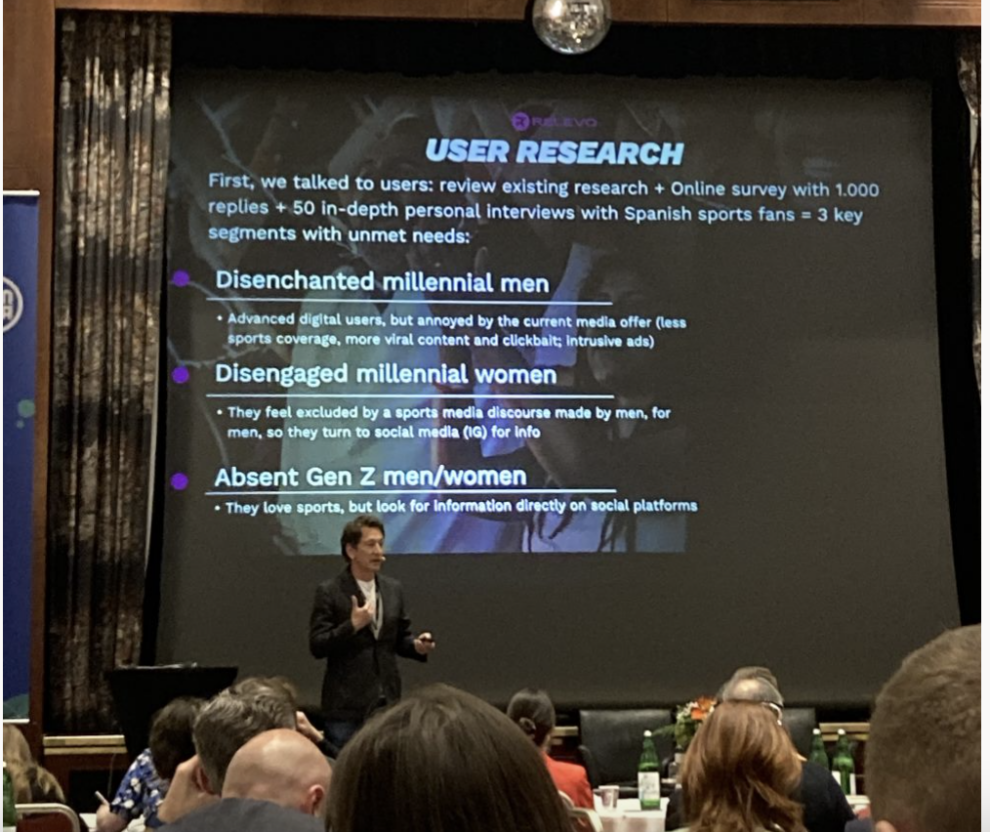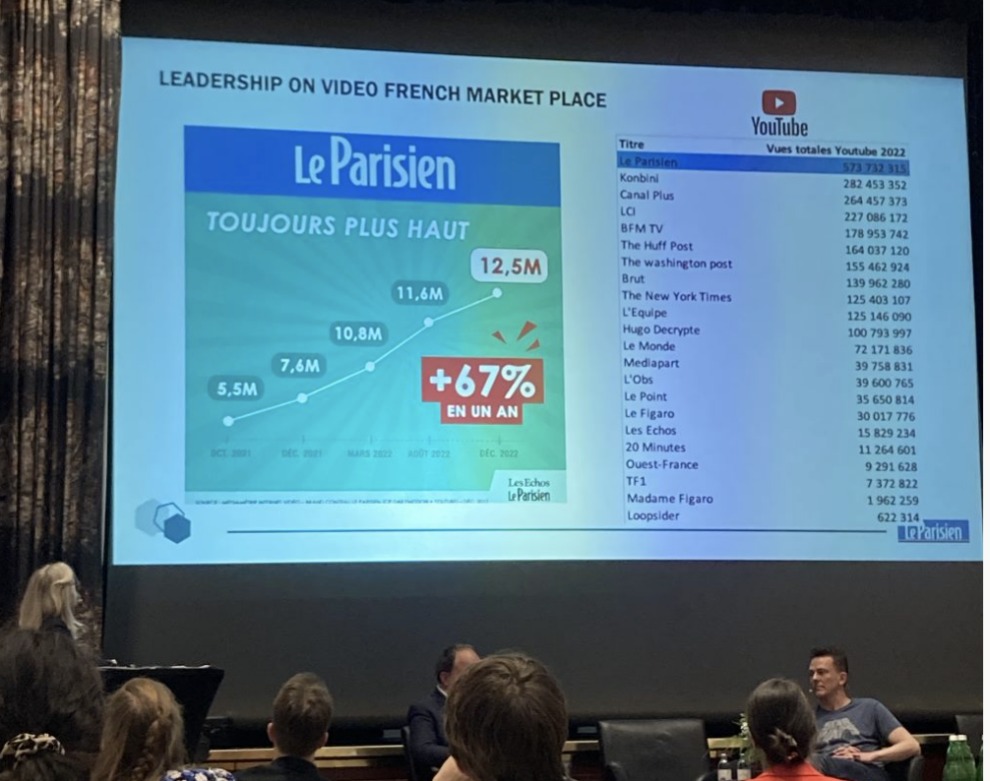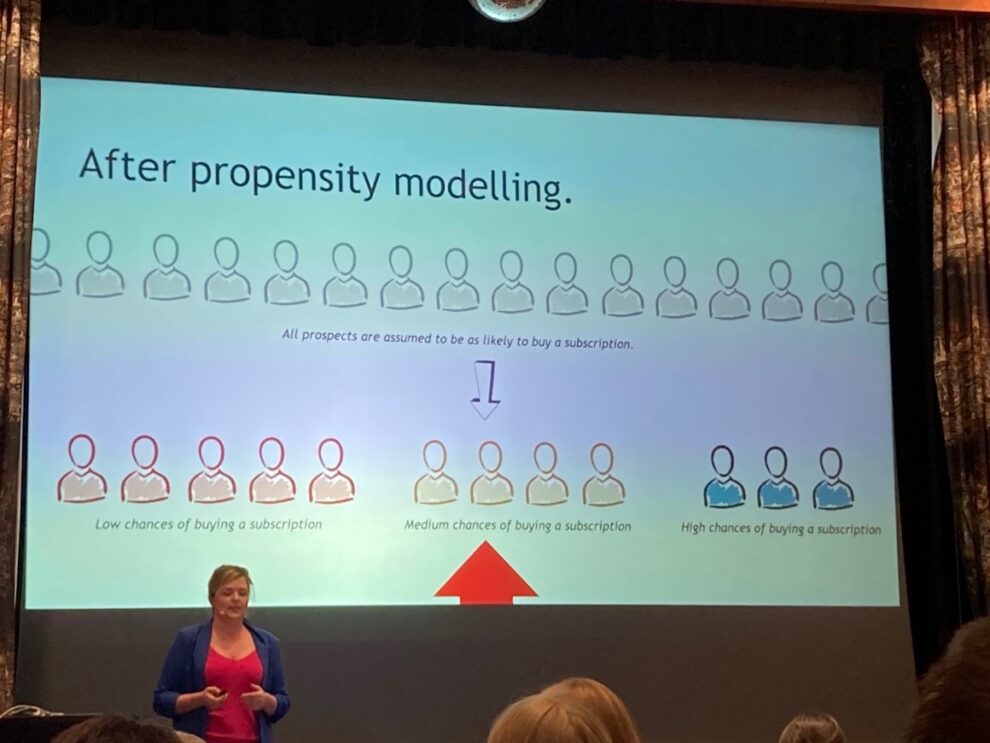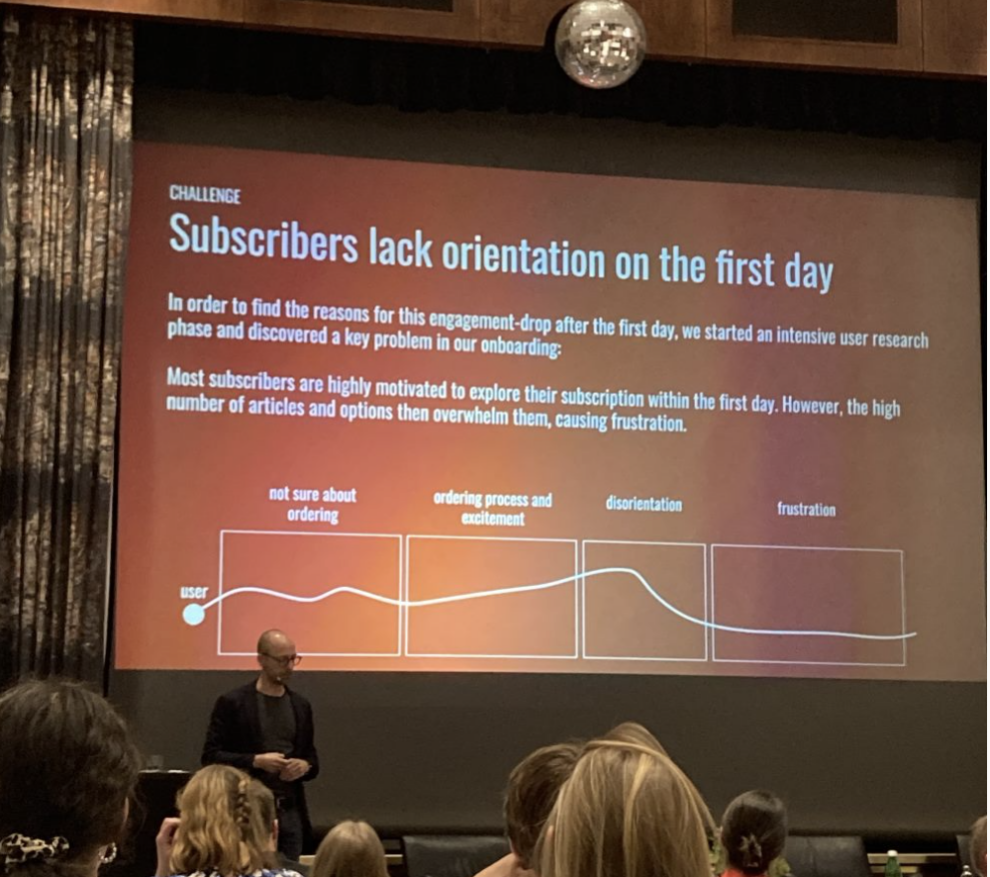The fight for GenZ, retention tactics and publishers’ approach to GenerativeAI – Key learnings from DME 2023
More than 200 people from the world of publishing gathered this week at Digital Media Europe in Vienna to discuss best practices for building digital products and increasing digital revenues. We highlighted key learnings and cases brought by LADBible, Le Parisien, Die Zeit, Mediahuis and TikTok themselves.
The fight for young audiences
Speaking at the event, Simon Binns, Managing Editor of LADBible Group, explained that the company’s success in engaging with 60% of millennials and 70% of GenZ in the UK is in part due to their platform-specific content strategy. LADBible Group has specific teams for platforms covering TikTok, Facebook, Instagram and YouTube. Each platform has its own strategy focused on the audience, meaning that not all content is shared on every platform.
“You wouldn’t dream of putting a video shot for TikTok on Facebook!”
Simon Binns, Managing Editor of LADBible Group
The same can be said of RELEVO, the new Spanish digital sports brand for younger generations. Germán Frassa, Digital Strategy Director told us that RELEVO content is strategically split between platforms, each with a different target audience in mind:
- Instagram for millennial women
- Twitter for millennial men
- TikTok for GenZ women
- Twitch for GenZ men

RELEVO learned to better understand the relationship between platform and audience by surveying 1000 readers and interviewing 50 of them to gain an in-depth knowledge of how they consume content. This strategy is paying off as RELEVO have gained 760k follows in just 8 months across 4 social networks, their 2023 goal Is 1.5 million followers.
Sophie Gourmelen, Managing Director & Publishing Director at Le Parisien, explained their goal to enhance time spent on their website and reach a younger audience by producing news videos. They created 3 video series on food, crime, and cycling in the city. Their newly created TikTok department now includes 20 video reporters.
Since 2021, Le Parisien have more than doubled their video views (5.5 million to 132 million in 2022) and had the top views on YouTube, beating all the main news players. Le Parisien’s goal is to have 170 million views in 2023.

Le Parisien has observed that revenues are following the same trend, increasing ten-fold since 2019. Sophie explained that whilst most monetisation does come from their website – the other platforms are just as important because they bring a wider audience.
In an effort to help publishers better understand TikTok, Tobias Henning – General Manager, TikTok Germany & Central Eastern Europe (and former General Manager for BILD & Welt within Axel Springer) gave publishers five key lessons to get started:
- Involve TikTok natives – hire the people who are the real experts on the platform and using it everyday.
- Leverage creators and journalists – Collaborations between creators and journalists can produce the best results.
- Don’t recycle material from other platforms.
- It’s about content, not followers – TikTok’s algorithm can push your content without you having a single follower.
- Be authentic! Personality driven content is key.
💰🔮 Scoop? TikTok’s Tobias Henning teased the audience that monetisation for publishers is coming to the platform, but no word yet on when that will be.
Importance of personalised journeys to increase retention
In an effort to present the right offer and communication to the right readers at the right time, Belgian publishing powerhouse Mediahuis began experimenting with propensity and next-best-action modelling in their daily work.
This didn’t happen overnight, Mediahuis have been gathering and improving data for several years, explained Jessica Bulthé, Data Science Business Partner.
“When you’ve just started walking, you can’t run as fast as Usain bolt – you need to train”.
– Jessica Bulthé, Data Science Business Partner at Mediahuis
Mediahuis’ data modelling benefits them in 2 key ways:
- They know which communication steps are most likely to get a user to subscribe.
- They can predict the subscribers most likely to churn and act before it’s too late.
On churn modelling, Mediahuis were able to implement relatively simple actions to keep users from cancelling.
- High chance to churn: Call them 👉 This strategy led to 14.17 % increase in retention.
- Medium chance to churn: Mail them with video from Editors explaining the benefits of their subscription 👉 This led to 9% increase in retention.
- Low chance to churn: Nothing done 👉 Saved time and money.

German publisher Die Zeit is a business with a stringent A/B testing culture who have also been focusing on conversion optimisation and reducing cancellations. Christian Röpke, Chief Digital Officer presented Die Zeit’s project ‘First Subscription Day’.
Die Zeit are well aware that new subscribers are particularly at risk with 1/3 of cancellations coming just 1 day after subscribing. They put this down to the experience being too complicated after a reader has accessed the content they paid for.
To improve this, ‘Project: First Subscription Day’ focused on the giving readers more guidance of how to benefit from their new subscription.

Die Zeit experimented with a personalised subscription start, asking the reader questions about their likes, and pushing them to different parts of the website or to download the app immediately after they subscribed.
On top of this they implemented changes to their footer bar that would appear on the first article a user reads after subscribing. Through this footer they asked the reader: “Do you want some help with your new subscription?” to allow for better orientation.
With these efforts Die Zeit was able to push the retention rate up 12% from the average, which means an extra 7,000 subscriptions per year.
Generative AI is here to stay
In discussion on generative AI, 4 panellists shared examples of how their organisations have already begun leveraging AI technology to automate, augment or transform their newsrooms.
Examples include:
- Automating repetitive tasks like transcriptions
- Augmenting headline generation with AI predictions
- Implementing AI that gives readers personal feedback when they leave comments, with the goal to increase the quality of the narrative around articles.

A big question that came up during the panel addressed regulation and editorial guidelines as tools like OpenAI will continue to draw from their content without consent or cost.
💰🤔 Monetisation Opportunity : Reddit recently made access to their API a paid feature, forcing OpenAI to pay to access the content.
When discussing how publishers can get started with Generative AI, panellists Ezra Eeman, Anja Bonnelli and Verena Krawarik agreed that it’s beneficial to start small and with the low-hanging fruit. This is particularly key as 63% of publishers don’t yet have an AI strategy, as shared by Ana Rocha De Paiva, Senior Programme Manager for News and Media at Google, with lack of resources cited as the main reason.
To help you stay on top of all the rapid recent evolutions in AI, we are launching next month a series diving into some of the key concepts, cases and expert opinions. Sign-up to the Twipe Insights newsletter to stay up to date.
***
Thanks to WAN-INFRA for organising a great event and thank to all the speakers for sharing learnings and insights. We are looking forward to continue the conversation in September at the Twipe Digital Growth Summit in Brussels. If you haven’t registered yet, make sure to book your ticket here.

Other Blog Posts

Stay on top of the game
Join our community of industry leaders. Get insights, best practices, case studies, and access to our events.
"(Required)" indicates required fields
